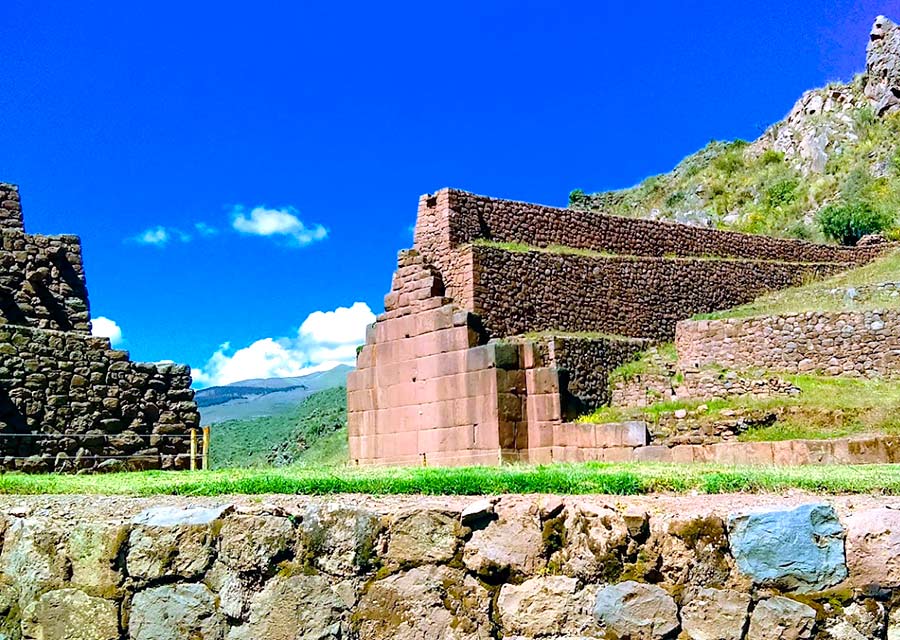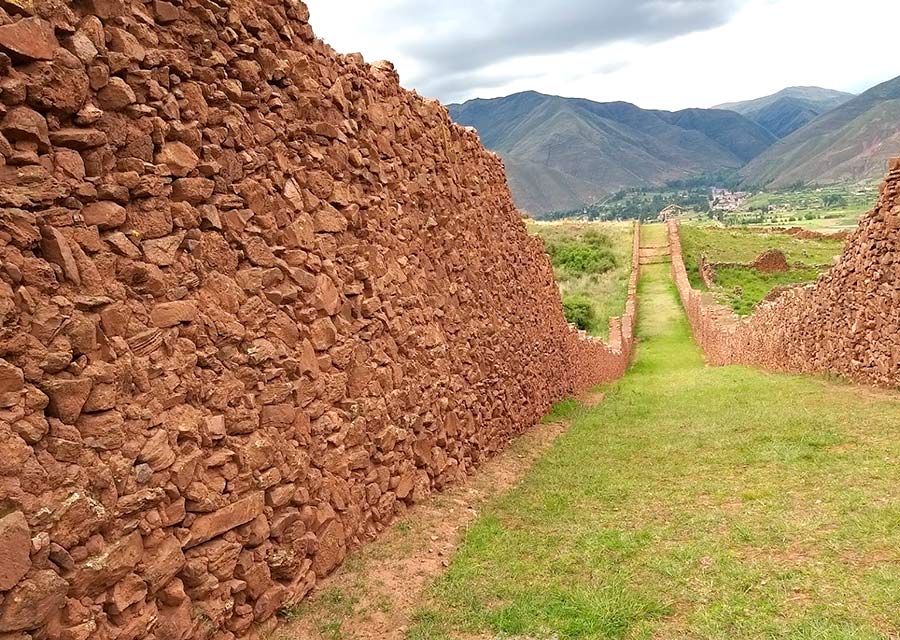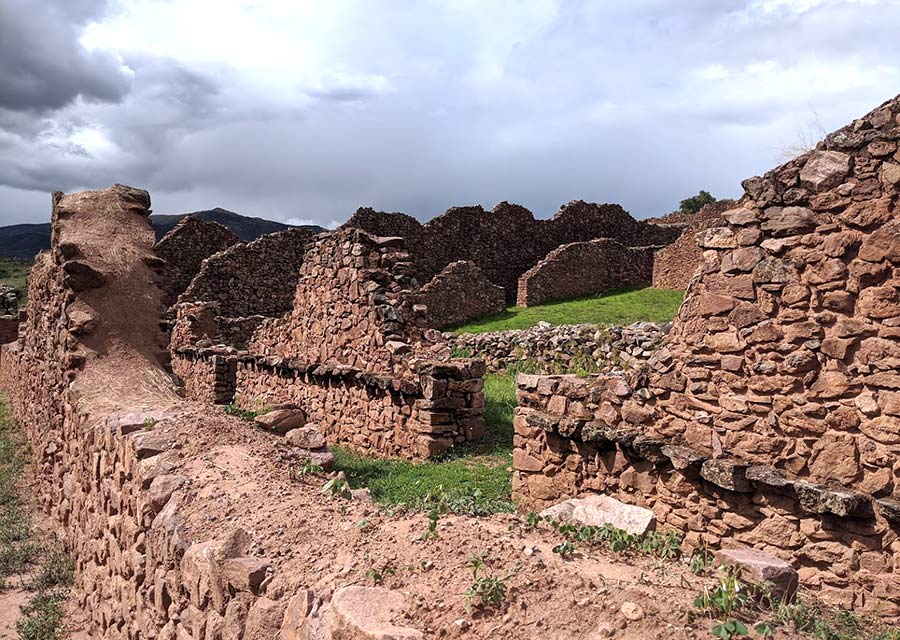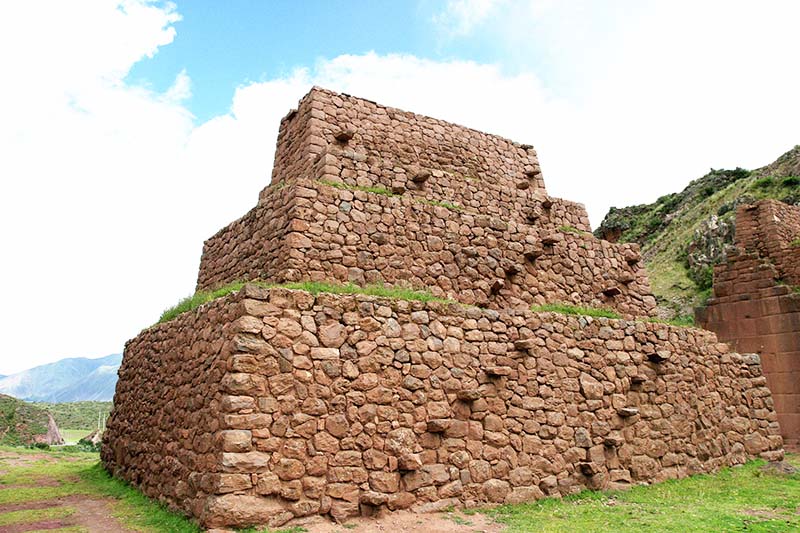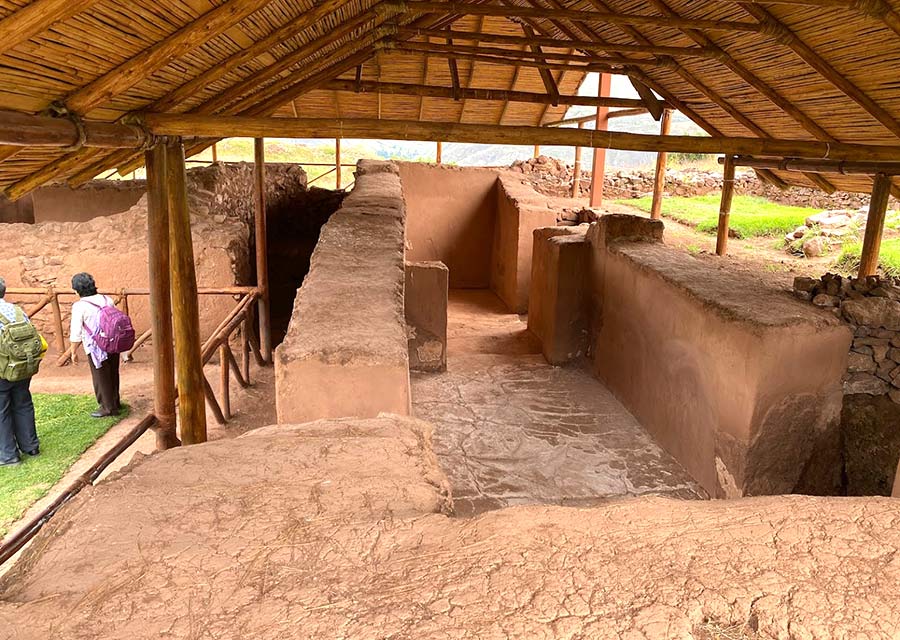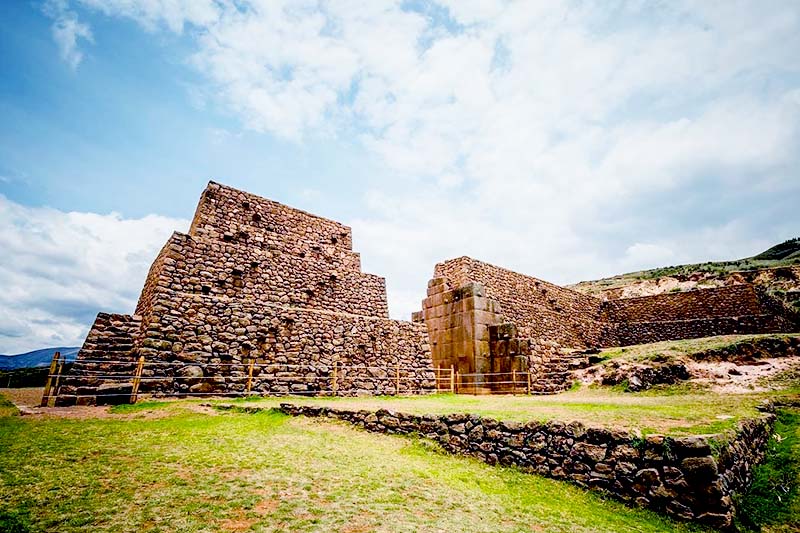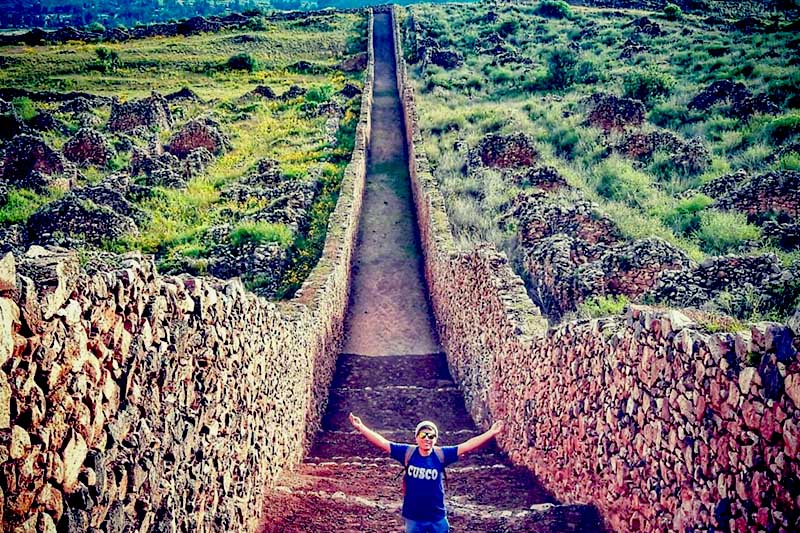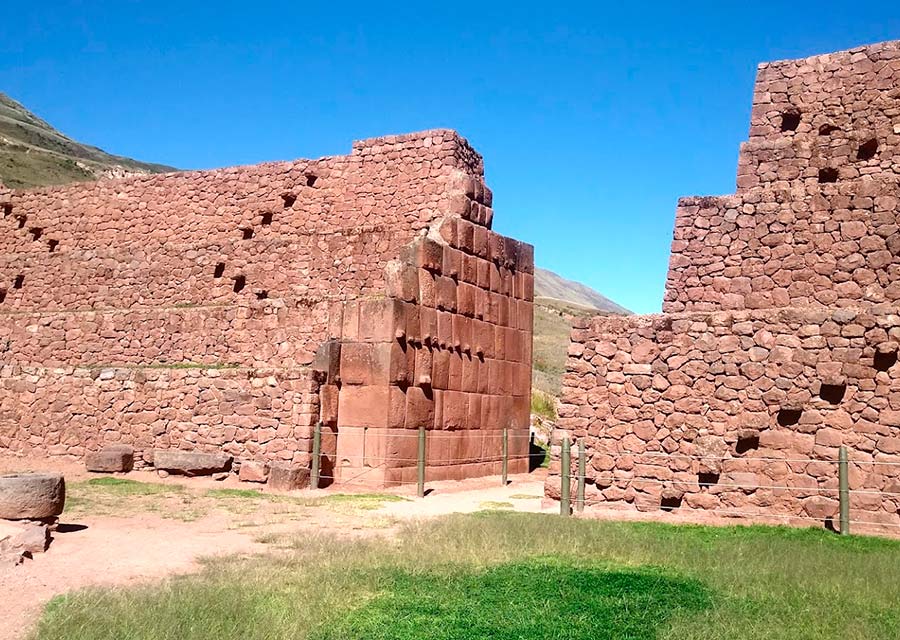Piquillacta, preinca city in the South Valley of Cusco
Piquillacta is one of the most famous and best preserved pre-Inca sites of the ancient cities that existed in Peru. Piquillacta was developed between the years 600 and 1000 AD The authors of its walls and adobe streets of up to three floors were the Wari, from the central Andes (Ayacucho). The Wari culture expanded to the south, locating itself in high Andean regions such as Cusco and Sicuani. From there they spread to the western valleys of the southern coast in Arequipa.
- Where is Piquillacta located?
- What does Piquillacta mean?
- Piquillacta, the city built by the Wari people
- What to see in Piquillacta?
- How to visit Piquillacta?
- Photos of Piquillacta
- Learn more about Piquillacta
- Questions and answers about Piquillacta
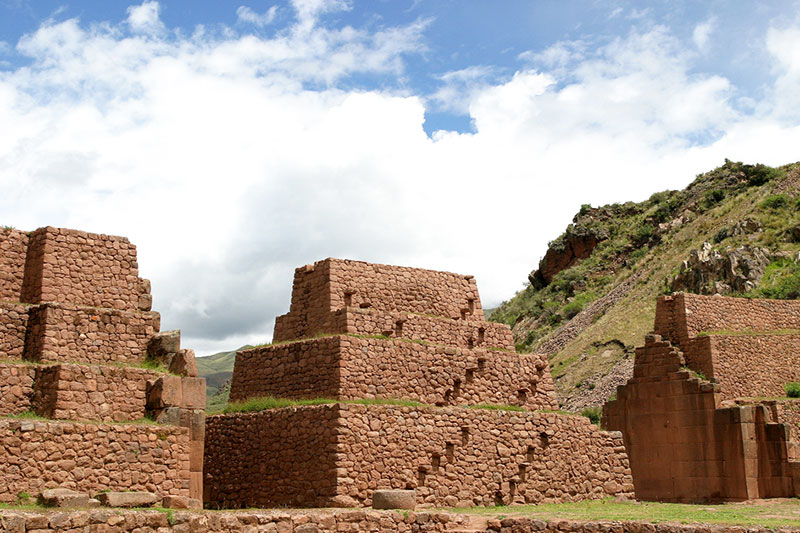
Archaeological Remains of Piquillacta
Where is Piquillacta located?
- The archaeological area of Pikillaqta is located near the town of Huacarpay, district of Lucre, province of Quispicanchis in the department of Cusco.
- If located 30 kilometers southeast of the city of Cusco (about 3,350 meters above sea level).
- The archaeological site covers an area of approximately 50 hectares.
What does Piquillacta mean?
- Piquillacta is a Quechua word where ‘piki’ means ‘flea’ and ‘llaqta’, ‘town’.
- Therefore Piquillacta could be translated as “the town of fleas”. However, ‘piki’ also refers to something very small, tiny. Therefore it could also mean “small town”.
- It is known that the name Piquillacta was assigned to it after the arrival of the Spaniards. And although her name in the Incas is unknown, it may have been Muyuna (on circuit) or Muyna (in a bad mood).
- At present this place is known as Huacarpay and is part of the Pikillaqta complex in the South Valley of Cusco.
Piquillacta, the city built by the Wari people
- Piquillacta is a pre-Inca city occupied by the Wari, an Andean culture that developed in the central and southern Andes as well as part of the Peruvian jungle between 100 and 1,200 AD.
- The most important Wari city was located twenty kilometers northeast of the city of Ayacucho. However, its buildings are spread throughout the coast and highlands of Peru.
- For some historians, the Wari were an empire, just like the Incas who occupied their territories some time later.
- Their cities were built under already established urban planning patterns. This architectural pattern was used by other Andean cultures, such as the Incas, who perfected their style.
What to see in Piquillacta?
In Piquillacta you can observe adobe constructions that reach up to two stories high. It also stands out for its long and narrow streets that run through its neighborhoods and squares. These are the most famous wari constructions in Piquillacta:
- Qaranqayniyuj – Qaranqayniyuj was the largest settlement after Pikillaqta. Some of their buildings are in the form of semicircles, constructed in an irregular shape. Part of them are located in a natural hondonada. The other lies on a larger plateau than the previous one.
- Choqepucjio – Choquepucjio is one of the most impressive constructions of the Piquillacta archaeological complex. They are located on the left side of the Huatanay River. These buildings have similar characteristics, constructions of 2 or 3 floors where the first floors are made of stone and mud. The upper floors are made only of adobe and mud.
- Urpicancha – Its name could be translated as the “house of birds”. It is one of the most important structures of Piquillacta and Cusco. It has platforms of extraordinary quality, excellently armed with no amalgamation of any kind. It is located on a small plateau with a huge mountain behind, east of the Huacarpay lagoon in Cusco.
- Kunturqaqa – Kunturqaqa is simply a large rocky promontory jutting out of the Huatanay, west of the city of Cusco. Its name can be translated as “Rock of the Condors” and it is understood that they gave it that name since the rock has the shape of the head of a condor. However, the true meaning of the place is still unknown.
- Amarupata Platforms – Amarupata means “place of snakes” and perhaps it was because snakes abounded in this place. These platforms are located southeast of the city of Lucre. Its ancient water channels are magnificent and are still used by the inhabitants of the area.
- Rumicolca – Rumiqolca was a monumental cover built by the Incas a few steps from the archaeological site of Piquillacta. It possesses a pyramidal shape of carved stone in a rectangular shape. It possesses water channels and staircases. In the Inca era it served as a gateway to Piquillacta. It also communicated the network of Inca roads, the qhapac ña.
How to visit Piquillacta?
You can visit Piquillacta with a tour or on your own:
- Travel with tour – The tour ‘South Valley of Cusco’ includes a visit to the tourist attractions in the south of Cusco: the archaeological site of Tipón, the archaeological site of Piquillacta and the church of San Pedro de Andahuaylillas. The service lasts 5 hours (half a day). Includes tickets, full transportation and professional tour guide service. The tours can be obtained at any tourism agency in Cusco. Prices vary according to each tourist agent.
- Travel on your own – The Cusco Tourist Ticket offers a circuit that includes admission to: Piquillacta, Tipón, the museum of contemporary art, the regional historical museum, the museum of popular art, the Coricancha site museum, the Qosqo center of native art and the monument to the Inca Pachacutec. This ticket costs 70 soles for foreigners and 40 soles for Peruvians. It can be purchased at the Piquillacta gate or on El Sol 103 avenue (a few steps from the Main Square of Cusco).
Learn more about Piquillacta
- The Rumicolca is a construction that is located outside the archaeological site of Piquillacta. To visit this building there is no entrance ticket, it is free for all visitors. It is located on the right side of the road, in front of Piquillacta. It is one of the most beautiful buildings in the area.
- Piquillacta is close to other much visited tourist attractions such as the archaeological site of Tipón (only 20 kilometers), and the church of Andahuaylillas (only 10 kilometers).
- A few steps from Piquillacta is the famous Huacarpay lagoon, home to wild birds. This place also offers one of the most beautiful landscapes in Cusco.
Questions and answers about Piquillacta
1) When is the best time to visit Piquillacta?
The dry season months (April to October) are considered the best to visit Piquillacta as there is little rain. This facilitates outdoor excursions throughout Cusco.
2) How to get to Piquillacta by public transport from Cusco?
The buses that travel the ‘Cusco – Sicuani’ route can take you to the Piquillacta gate. The service is taken on Huayruropata Avenue. The trip takes almost 1 hour and costs approximately 1 dollar per tourist.
3) What is the weather like in Piquillacta?
Piquillacta has a temperate climate. The temperature can vary from a maximum of 23ºC. up to a minimum of 2ºC. During the afternoon, when the tourists arrive, the average temperature is 14ºC.
4) What was the function of Piquillacta?
Piquillacta was a citadel of great importance in the Wari era that housed about 10,000 people. In Inca times, it served as a checkpoint for the people who traveled along the royal roads, the qhapac ñan.
5) Who built Piquillacta?
Carbon fourteen tests suggest that Piquillacta was built during the expansionist era of the Wari empire in the seventh century approximately.
6) How much does it cost to enter Piquillacta?
The Piquillacta entrance is included in the Cusco Tourist Ticket whose cost is 70 soles for foreign tourists and 40 soles for Peruvians.
7) How much does a tour to Piquillacta cost?
The price of the tour to the South Valley Cusco varies according to the tourism agency you choose. The fee can vary from 15 to 60 dollars. Includes a visit to Piquillacta, Tipón and the church of Andahuaylillas.
8) What to bring to my visit to Piquillacta?
For the visit to Piquillacta, do not forget to bring with you: comfortable sportswear, poncho in case of rain, sunscreen, hat, cash, camera, snacks and rehydrating drinks.
9) What is Piquillacta’s care schedule?
Piquillacta is open from Monday to Sunday from 7 in the morning until 6:30 in the afternoon.
10) What else to see on the trip to Piquillacta?
During the trip to Piquillacta you can visit the archaeological site of Tipón and the church of San Pedro de Andahuaylillas. Also you can visit the Huacarpay lagoon, a place with beautiful scenery.
By Ticket Machu Picchu – Last updated, August 15, 2024
